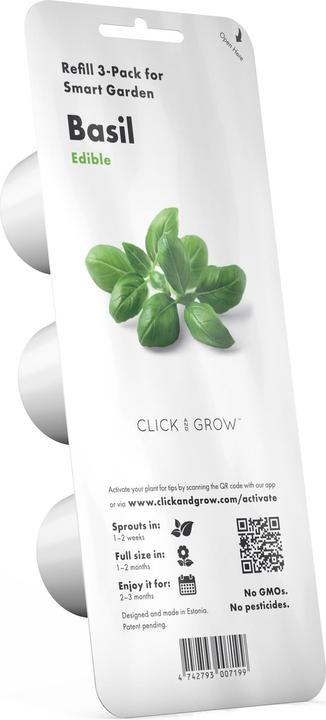
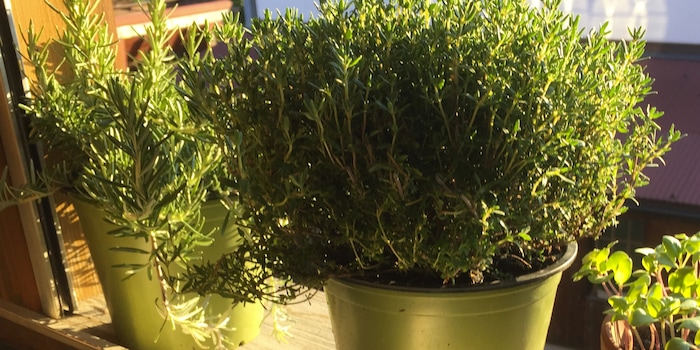
Fresh kitchen herbs from the windowsill
When sub-zero temperatures and snow make their grand entrance outside, fresh herbs on our windowsill are a welcome alternative to garden herbs on the balcony or in the garden. But watch out! Not all kitchen herbs are really suitable for the warm and dry indoor air.
Which herbs are suitable?
Almost all kitchen herbs are suitable for planting on the windowsill. It is very important that you choose herbs that tolerate the dry climate and warm temperatures in the living room well. I have compiled a list of suitable herbs below:
- Rosemary
- thyme
- Basil
- Nasturtium
- Melissa
- Origanum
- Chervil
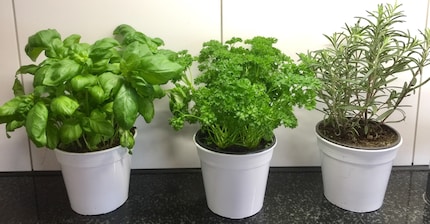
Which herbs are not ideal?
There are kitchen herbs that thrive much better in the garden than on the windowsill. The cooler temperatures usually play a key role here. Here are some examples of plants that feel much more comfortable in the garden:
- Chives
- Parsley
- Lovage (also popularly known as "maggi herb")
- Starragon
Many of these herbs immediately turn yellow, long and unsightly.
What should I look out for?
Although chives and parsley are sold in winter as aromatic herbs in pots, they quickly turn yellow and "lame" and unsightly in the living room. This is because it is simply too warm for them in a heated living room. If you still don't want to do without it, I recommend cutting the leaves as quickly as possible and then planting the plant in a larger pot and placing it in a sheltered spot on the balcony or in the garden.
But be careful: in heavy frost and high sub-zero temperatures, the plants will freeze immediately as they are not "hardened off". It is therefore better to wait until it is warmer again. Alternatively, a slightly cooler stairwell or additional winter protection is suitable so that the plant doesn't freeze to death as soon as you put it outside.
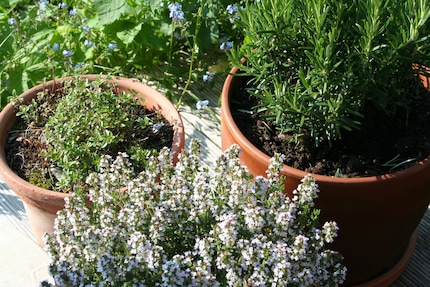
Image: andreas-homegardening
Which is your personal star on the windowsill?
Basil is particularly suitable for the windowsill. However, other herbs that like to be warm and tolerate dry indoor air well can also be used.
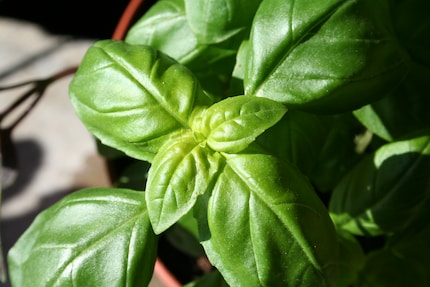
As basil needs a place that is as bright and warm as possible, it feels right at home on the windowsill. With the right care, basil and co. will delight us with its aromatic, spicy fragrance for a long time. It's not the quantity that matters here. Just a few fresh herbs can lead to a small, fine flavour experience.
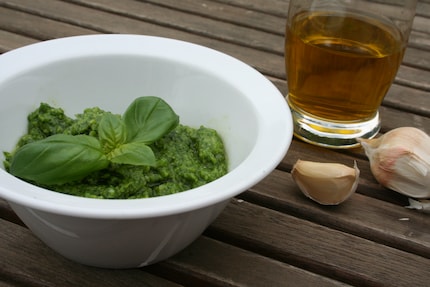
How do I harvest my aromatic herbs?
When harvesting herbs, it is important not to harvest individual leaves at random, but always the topmost tips (shoot or leaf tip). Basil is an ideal example of this. All you need to do is use sharp scissors to cut off a pair of leaves just above a leaf axil together with a piece of stem.
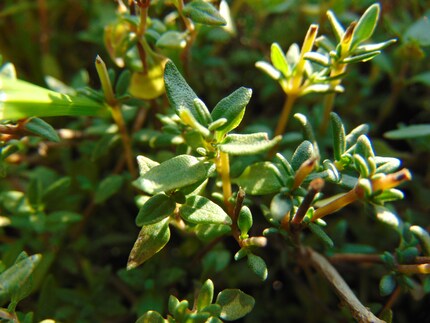
This allows the basil, or the thyme shown here, to sprout new shoots with leaves at the base of the leaves. It also prevents flower formation. This is because as soon as the basil forms flowers, all the energy goes into the flowers and almost no new leaves grow back. For plants that do not have branched growth, the individual leaves and stems can be cut off approx. 1 cm above the soil.
Where can I get fresh herbs?
You can usually get basil - like other herbs - pre-packaged in cellophane bags in the supermarket vegetable section. The transparent cellophane bag protects the plant from the worst of the cold. But be careful: if the temperature outside is below freezing, it is important to protect the aromatic herbs from the cold. Placing them in a paper carrier bag or wrapping the plant in simple floral or tissue paper is usually enough.
How do I sow herbs myself?
Of course, you can also sow the plant yourself on the windowsill.

You can also find more information on this in the article "Basil: much more than a kitchen spice"
How do I look after my kitchen herbs?
For once, the size of the pot doesn't play a major role, as the culinary herb needs to be fertilised with a little organic liquid fertiliser every two to three weeks anyway. I personally use a fertiliser that is in mineral balance and contains everything necessary for healthy plant growth.
Very important! The basil should only be watered from below. The amount of water required can vary greatly depending on the size of the herb, the container and the temperature. It is best to pour 0.5 - 1 cm of water into the saucer or planter every day. Be sure to drain the water after half a day: otherwise the basil will get wet feet, which it doesn't like at all. Rosemary, thyme and other Mediterranean aromatic herbs should be watered very sparingly, otherwise "water damage" may occur. This is characterised by dark (black-brown) edges on the leaves of the plant.
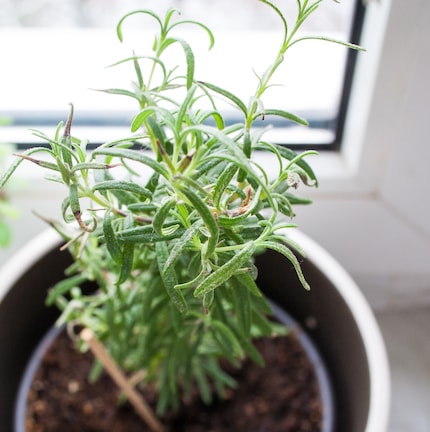
How do I use kitchen herbs?
You can use culinary herbs fresh or cooked in the kitchen. Fresh, for example, for a homemade quark dip, cooked to refine a delicious pizza from the oven. Deliciously fragrant, culinary herbs found their way into the kitchen very early on and enriched our senses with their aromatic and beguiling scents. A noseful of the Mediterranean scent of rosemary or thyme on the windowsill is a good recipe against the winter blues.

Image: andreas-homegardening
When are you starting your kitchen herbs from the windowsill project?
With these products, you are ready for your kitchen herbs:

Click and Grow Basil
Herb seeds

Samen Mauser Basil large-leaved
Herb seeds

Samen Mauser Bud organic cress
Herb seeds

Samen Mauser Chives seed plate
Herb seeds

Click and Grow Substrate capsule curly parsley
Herb seeds

Samen Mauser Tarragon, Russian
Herb seeds

boskke Sky Planter Small

WMF herb garden
14 cm

Plantui Smart Garden 6
29 cm
You might also be interested in:
I discovered my love for gardening very early on and later turned my passion into my profession. For a few years now, I’ve been regularly writing blog posts and publishing articles in the HomeGardening section of myPfadFinder.com. This is where I give readers tips and tricks on gardens and balconies and present my latest gardening videos.
Find out more about me here: <a href="http://www.andreas-homegardening.com/" target="_blank">www.andreas-homegardening.com</a>
Interesting facts about products, behind-the-scenes looks at manufacturers and deep-dives on interesting people.
Show all